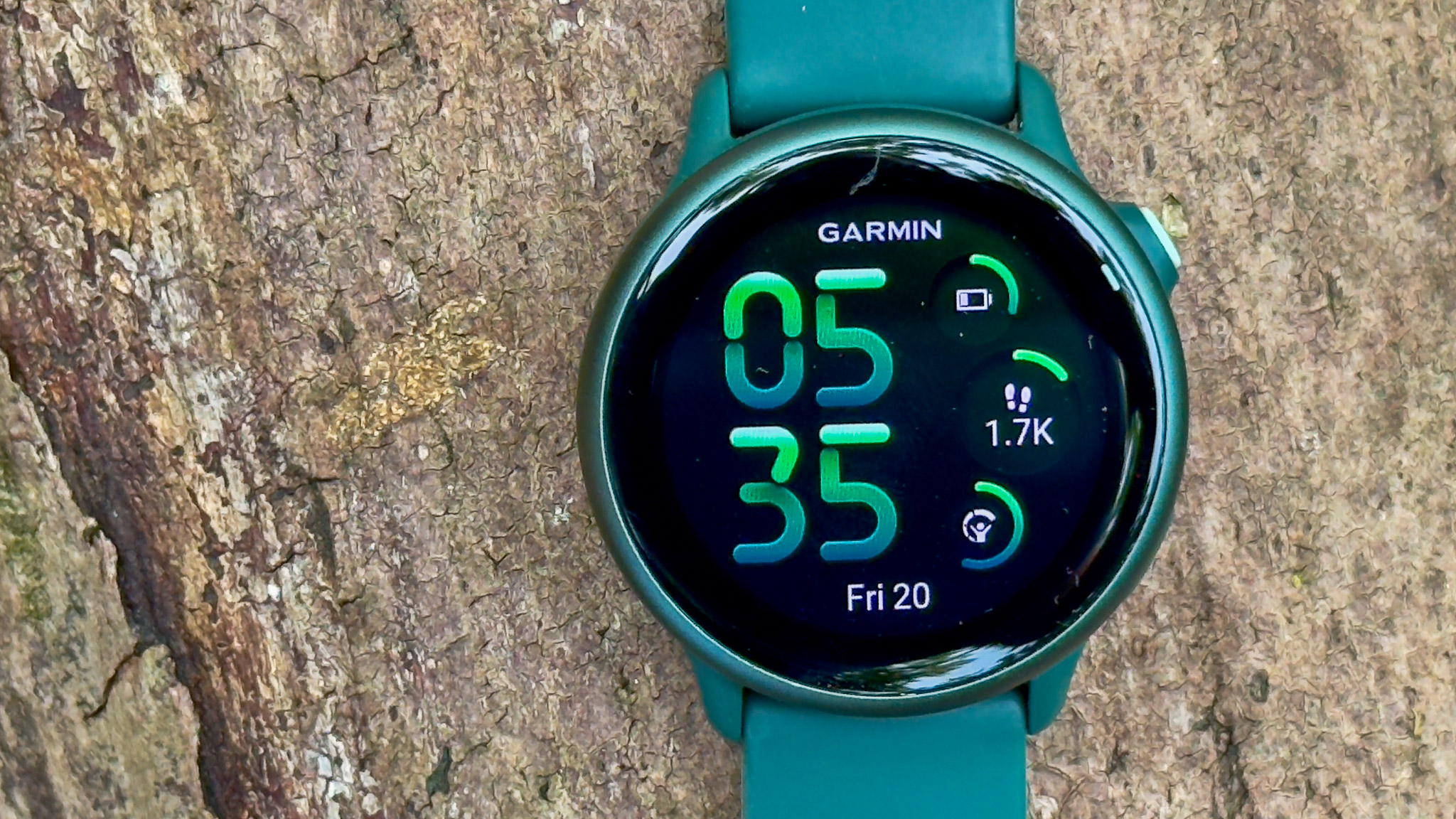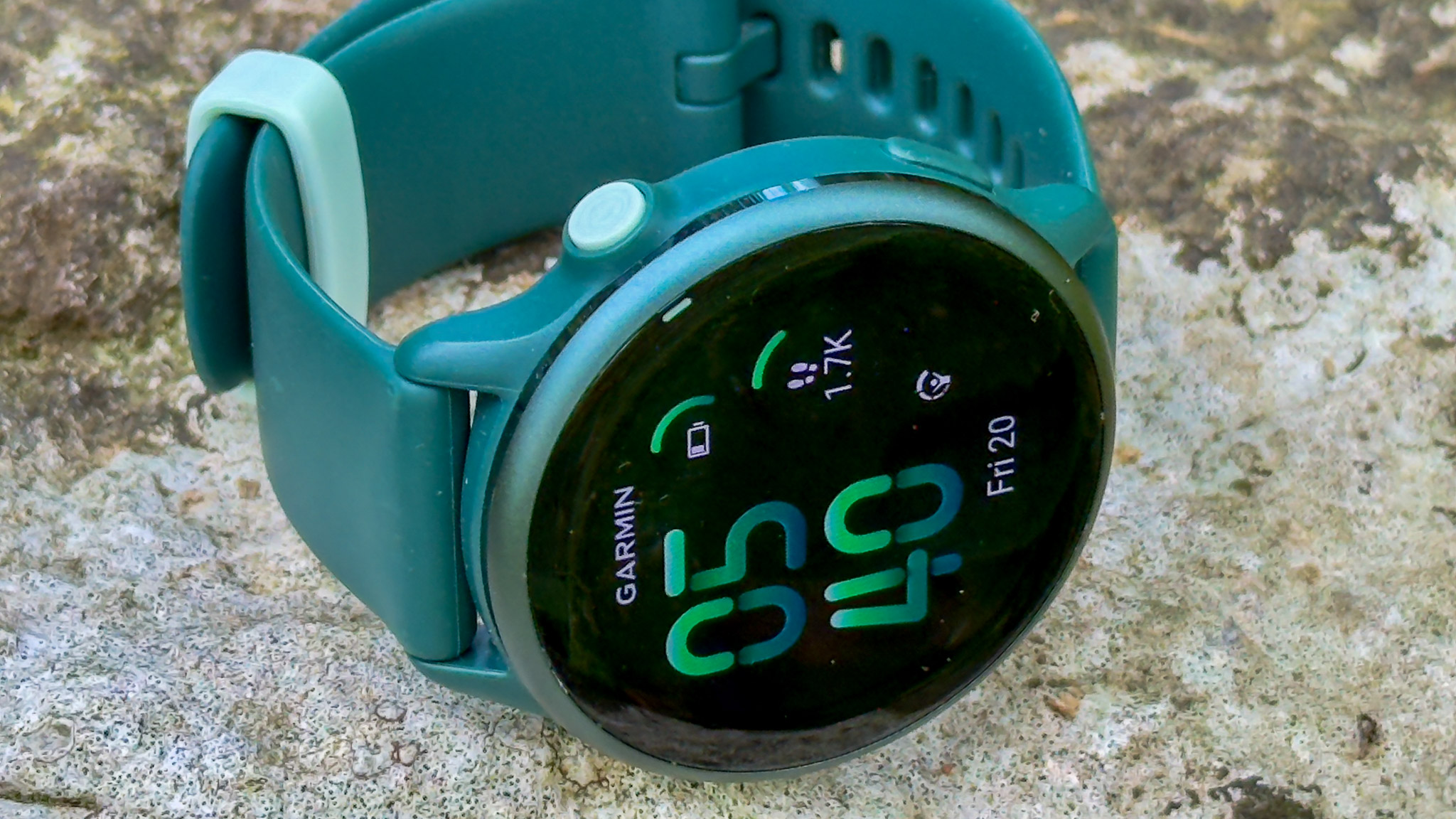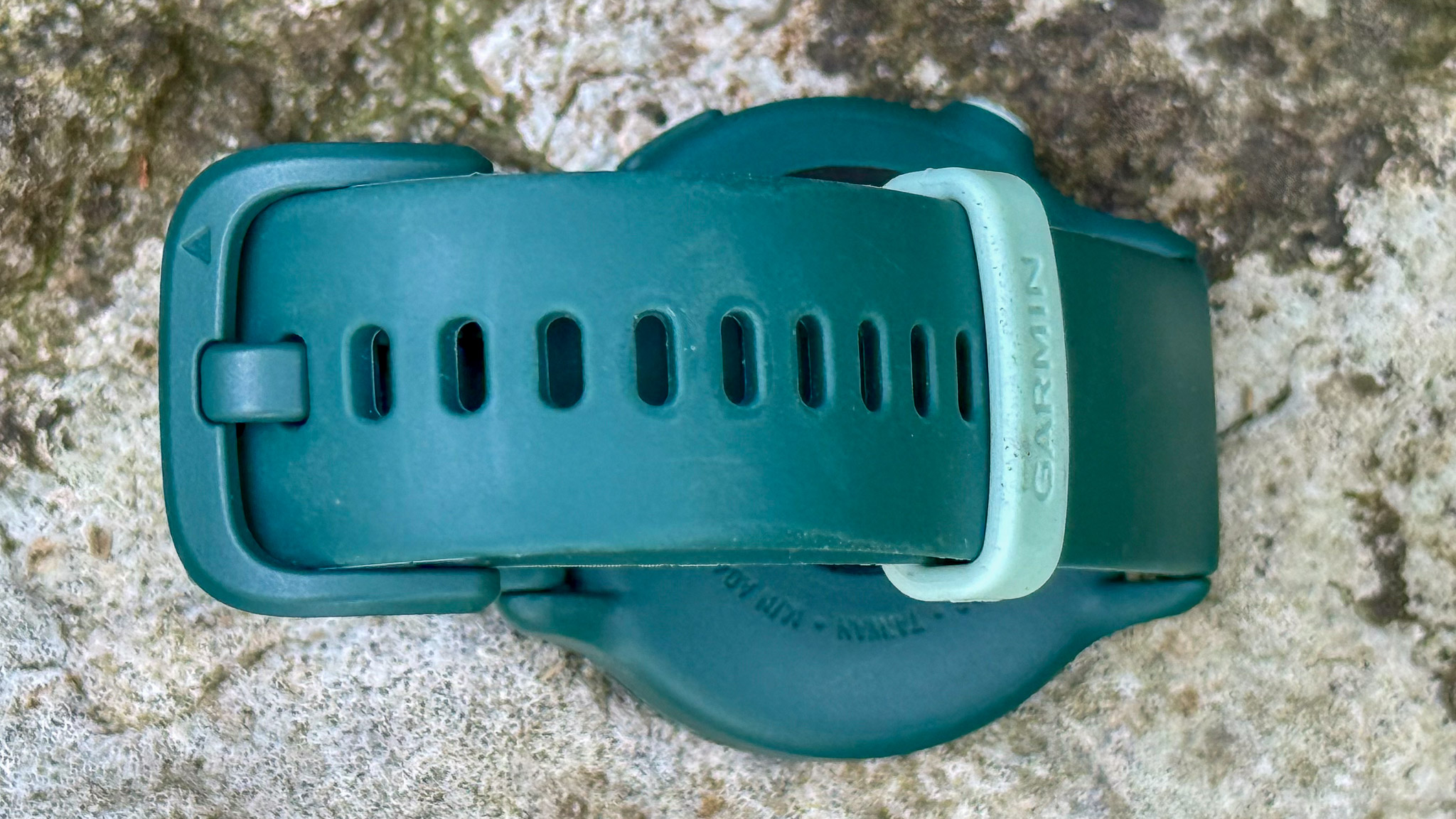Garmin Vivoactive 6 review: a surprise hit for fitness, recovery and daily use
If you’re looking for an uncomplicated but feature-packed GPS, touchscreen smartwatch with built-in fitness coaching, consider this Garmin


The Vivoactive 6 is a sleek, intuitive fitness companion that’s packed with features for everyday training, recovery and wellness. While it’s not built for mountain epics, its touchscreen, coaching tools and Body Battery insights make it a superb all-rounder for active lifestyles, especially if you live inside the Garmin ecosystem.
-
+
Packed with sport features
-
+
Clean graphics
-
+
Intuitive OS
-
+
AMOLED touchscreen
-
-
Relatively costly
-
-
Some Android-only features
-
-
Medium battery life
Why you can trust T3

Matt Kollat
At first glance, the Garmin Vivoactive 6 looks like a simple lifestyle watch: lightweight, sleek, and a bit of a crowd-pleaser. But don’t be fooled. Under that streamlined exterior is one of Garmin’s most accessible yet surprisingly powerful smartwatches to date, designed to keep up with your running, gym sessions, golf rounds, yoga, and even breathwork.
Launched as the successor to the Vivoactive 5, this sixth-gen model marks a quiet evolution for Garmin. It ditches any overcomplication in favour of ease, clarity, and versatility. You get an intuitive touchscreen OS, a bright AMOLED display, 80+ sport modes, Garmin Coach plans, Body Battery tracking, and even real-time running dynamics, features usually reserved for more serious watches.
It’s not perfect, though. Battery life is middle-of-the-road, and iPhone users miss out on a few perks, but it’s also not trying to be a rugged outdoor watch. This is the Garmin watch for people who might go from weightlifting to padel, then hit the slopes or train for a half-marathon. Or maybe just want to sleep better and stress less.
If your goal is to get moving, stay moving, and build better habits without diving into full-on multisport madness, the Vivoactive 6 could be your next wrist-based motivator.
Garmin Vivoactive 6 review
Price and availability
The Garmin Vivoactive 6 Active was launched in April 2025 and is available to buy from Garmin UK, Garmin US and Garmin AU for a recommended price of £279.99/ $299.99/ AUS549. This is £30 more than the previous Version 5, which has fewer advanced sports features and a less user-friendly OS, and also Garmin’s dedicated running wearable from 2024, the Forerunner 165.
Specifications
- Screen: 1.2 inch (30.4mm) AMOLED, 390 x 390 pixels
- Lens: Corning Gorilla Glass 3
- Case: Fibre-reinforced polymer
- Bezel: Anodised aluminium
- Battery life: From 11 days in smartwatch mode, to 21 hours with GPS tracking.
- Internal Storage: 8GB
Design and build quality

The low-profile design of the Garmin Vivofit Active 6, along with its 36g weight (including the strap), makes for comfortable wear, although I generally prefer a textile strap for both sleeping and sweaty workouts.
The silicone strap’s natural slight stretch maximises comfort, and it keys well into the overall aesthetic, but it doesn’t look particularly premium. That said, the smooth, low edges of the anodised aluminium bezel both add a touch of style and ensure that you don’t really notice the watch when wearing it overnight.
Get all the latest news, reviews, deals and buying guides on gorgeous tech, home and active products from the T3 experts
The one notable upgrade to the chassis from the predecessor is the raised start/stop button, which is both more aesthetically pleasing and easier to use with workout-wobbly fingers. The OS has also been reworked with easier-to-read graphs and graphics, and attractive colour gradients.
In terms of durability, the Garmin Vivoactive 6 is surprisingly rugged, and if you do knock it, the silicone strap gives a bit to avoid scrapes, although the smooth bezel does leave the touchscreen quite exposed.
I found the combination of a large start/stop and selection button with a smaller, raised ‘back’ button lower down on the chassis to be tactile, refreshingly intuitive, and simple to use. Meanwhile, the touchscreen itself was responsive and bright, even in direct sunlight.
Features
The general design and styling of the Garmin Vivoactive 6 places it squarely in the active lifestyle bracket, which is borne out by the spread of features. As well as the activity tracking and fitness coaching (more on that below), features to help you live a better life include a breathwork mode (for mediation and assisting sleep), Body Battery energy monitor, stress tracking (using the Firstbeat Analytics engine), sleep tracking, nap detection and women’s health.
I’ve been using box-breathing to combat stress, or prepare for something gnarly, for years, and I found it useful to have a ‘fourfold breathing’ timer baked into this feature to avoid ‘cheating’ when counting in my head.
For me, having a smartwatch should liberate you from having to pull out your smartphone every five minutes, which is why I rate the Vivoactive 6’s Garmin Pay feature for contactless payments. Admittedly, not many card issuers directly support it, but the workaround using the Curve app seems to do the job.
The more ‘core’ sport features are surprisingly deep and varied for an active lifestyle wearable, with 82 different sports catered for. As ever, this seems like a ludicrous number until you see how general categories such as running are broken down into pleasingly granular activities, including trail running and obstacle running.
There are some real niches catered for here, from MMA and skipping to padel and archery. And if you’re a golfer, you’re spoiled by a full parade of golf-specific features that work alongside the Garmin Golf app, including AutoShot game tracking and a visual view of the green on which you can manually set the flag position.
Thankfully, given that the vast majority of users will focus on running, gym and cycling/ swimming, the Vivoactive 6 delivers a whole host of specific features here.
One pleasant surprise in a non-dedicated running watch was the Running Dynamics feature. You have to add this as a data screen in the Running activity settings, but it allows you to view in real-time your running cadence, stride length, ground contact time and vertical ratio/ oscillation, all of which were interesting windows into my running bio-mechanics, which can help you to work on running performance.
The basic breadcrumb navigation enables you to follow a route that you’ve created beforehand in the Garmin Connect app, extending the adventure credentials of this watch. That said, I’d hesitate to recommend this to trail or hill runners because the lack of a barometric altimeter will skew the performance data.
For gym-going, the ability to track sets, reps and rest time during strength workouts proved to be nifty. The downloadable, animated workouts from Garmin Connect, which are viewable on the touchscreen, are a cute feature, but I’d still recommend using a personal trainer for in-person feedback on exercises that are new to you, especially if you are lifting heavy.
One Garmin Connect feature I did find genuinely useful was Garmin Coach, which I used to start a half-marathon training plan. I was able to fine-tune the duration and schedule to my needs and then follow the workouts on the Vivoactive 6, with pace alerts.
The plan can adjust according to your daily performance and recovery metrics, which have been conveniently gathered by the watch, as long as you use the sleep tracking feature. When you compare the relative cost of using an actual human coach to build a plan for you and monitor your progress, the Vivoactive 6 starts to look like a great deal.
When it comes to recovery, I found that this smartwatch excelled at tracking sleep duration, providing a clear at-a-glance readout of sleep quality. However, the text summary did feel a little harsh when I had a turbulent night.
Sleep Need is the kind of advanced feature I look for, which takes my activity and recovery levels into account when recommending sleep duration, reminding me that the more I do, the better I need to recover.
Performance and accuracy

Let’s start with the Garmin Vivoactive 6’s performance as a smartwatch. With its readable graphics and approachable OS, this wearable does punch above its weight in terms of screen size when viewing notifications and messages, which are easy to read at a glance, and which you can also click on to expand.
One annoyance for me, as an iPhone user, was that responding to/ rejecting calls with text and viewing images from notifications on the watch face are Android-only features. This feels like a nerf too far, especially as viewing images appears front and centre in the marketing, and being able to manage calls mid-workout without interrupting your flow is clutch.
In terms of the heart rate tracking, it was good for steady state efforts, and the heart zone alerts were useful. The optical Elevate HRM is Gen4, so it won’t compete with top-of-the-range wearables, and as I’ve said before, all wrist HR monitoring tech seems to suffer a slight lag when driving up your heart rate with high-intensity intervals.
Wrist-based heart rate sensors always seem to lag behind your heart rate as it falls. For super-accurate HIIT training, you’re better off pairing the Vivoactive 6 with a heart rate monitor, which is available separately.
Of the HR and Body Battery tracking, I found the latter most useful, giving an at-a-glance indication of whether I had the physical reserves for a long run, or an intense bouldering session, or if I’d be better off doing a recovery jog followed by maxing out my macros with a proper feed.
The GPS tracking seemed accurate enough with the GNSS chip, although this hasn’t been upgraded from the Vivoactive 6’s predecessor, and a multi-band GPS chip will locate satellites quicker as you set off on a run.
Battery life and charging
This is a very light smartwatch, so I wasn’t expecting much in the way of battery life longevity, but Garmin’s numbers do seem slightly adrift. If you’re the type to dig into menus, view lots of data screens and have notifications turned on, I’d adjust your expectations significantly downwards from the claimed 21 hours with GPS.
The upside of a small, light battery is that it charges up very quickly using the USB-C proprietary cable, enough to revive it from dead in minutes if you did leave it in a drawer. But this watch excels as an always-worn lifestyle companion, so you shouldn’t be doing this, and the homescreen’s battery life indicator allows you to easily track the power reserves.
Unlike some, the charging cable clicks home positively, so there’s no risk of a loose connection mid-charge. During testing, with heavy use, I got around five days on a full charge.
Verdict
At first, I wasn’t sure what the Garmin Vivoactive 6 was trying to be. You can look at its lightweight comfort and plethora of running features and think it’s a runner’s companion, but that’s the wrong end of the stick.
If, instead, you’re looking for an extremely easy-to-use and customisable active lifestyle companion, which you may take snowboarding one day and weightlifting the next (or 80+ other activities), then the Vivoactive 6 is worth your attention.
It’s the kind of wearable that you’ll need to keep on, day and night, in order for it to gather the necessary data to track your sleep, recovery and Body Battery. Fortunately, I found the Vivoactive 6 both stylish and unobtrusive enough to wear all day. By then, combining it with Garmin Connect’s library of workouts and cardio training plans, it became an active lifestyle powerhouse.
Sure, the lack of a barometric altimeter did limit it for my trail running and other vertical adventures, but then that’s where the step up to a more fully-featured adventure smartwatch, or advanced runner’s wearable, should be made.
The Vivoactive 6 did drop a point for some Android-only features and the battery life, but you can’t expect weeks-long reserves in such a lightweight chassis.
Matt Ray is an outdoor journalist and photographer whose work appears in magazines and websites, including RedBull.com, Men’s Fitness and Nat Geo Traveller. He can find an adventure anywhere, from racing a mountain bike down a ski slope, to climbing under bridges in Edinburgh.
- Matt KollatSection Editor | Active
You must confirm your public display name before commenting
Please logout and then login again, you will then be prompted to enter your display name.
